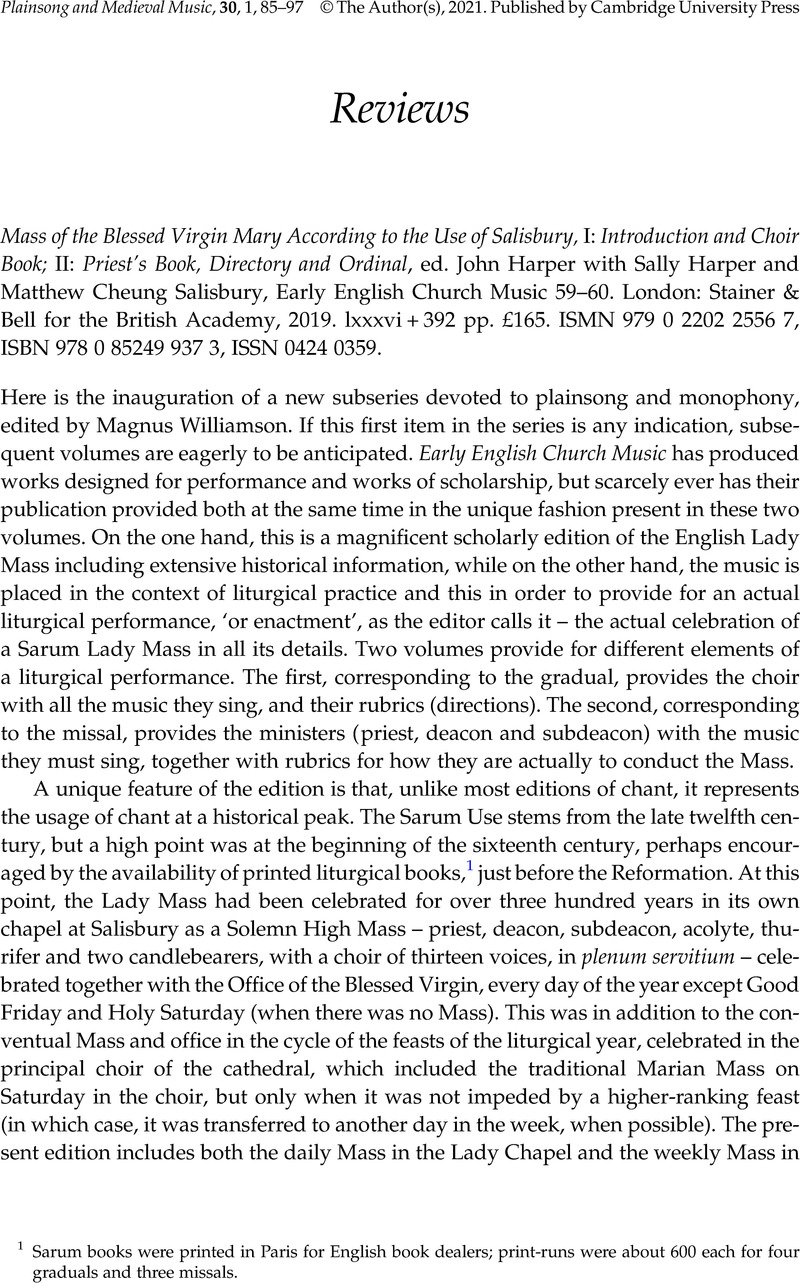No CrossRef data available.
Published online by Cambridge University Press: 05 August 2021

1 Sarum books were printed in Paris for English book dealers; print-runs were about 600 each for four graduals and three missals.
2 Harper cites four graduals printed before 1500, but there are quite a few more; see Meyer-Baer, Kathi, Liturgical Music Incunabula: A Descriptive Catalogue (London, 1962)Google Scholar. The gradual attributed to Constance is definitely not from there; it is the first gradual ever printed and is without title page or colophon; its contents suggest a region east of Augsburg.
3 Harper, John is the author of The Forms and Orders of Western Liturgy from the Tenth to the Eighteenth Century (Oxford, 1991)Google Scholar; for years, I sought unsuccessfully for accurate literature to give students on the liturgy; when this appeared it fulfilled every expectation and is still the best resource.
4 Harper, Sally, Barnwell, P. S. and Williamson, Magnus, eds., Late Medieval Liturgies Enacted: The Experience of Worship of Cathedral and Parish Church (Farnham, 2016)Google Scholar, www.experienceofworship.org.uk. The website includes videos of complete liturgical services that make the edition come even more to life.
5 Annunciation, Dormition (Assumption), Nativity and Ypapanti (Purification).
6 Identified by their introits: Rorate caeli for Advent, Vultum tuum for Christmas, and Salve sancta parens, for the normal year.
7 For all intents and purposes the Trinity Chapel was a ‘Lady Chapel’, but since the whole cathedral, that is, its high altar, was dedicated to the Blessed Virgin, the altar in the chapel could not be designated de BVM.
8 The Assumption, Visitation and the Nativity of Mary each celebrated an octave. The other three feasts, Conception, Purification and Annunciation, occurred in seasons when an octave would be impeded.
9 The Text is a ceremonial gospel book, which is not for the actual reading, but only carried in the procession, and given to each singer to kiss.
10 Rubric derives from ‘ruber’, red.